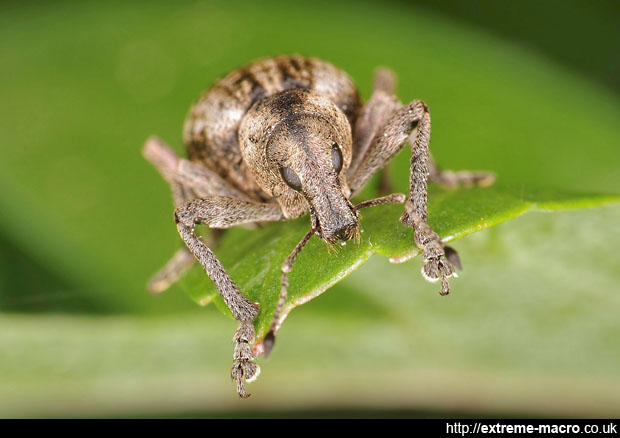Using HDR For Macro
by Johan J Ingles-Le Nobel
Last updated August 31, 2017
High Dynamic Range (HDR) isn't used all that much in macro photography but it's a technique worth investigating as it might help to reduce one of the problems that photographers using flash face.
Light Falloff
One of the things that works against you in macro photography using flash is light falloff. In other words, light falls off by the square of the distance. Point flashlight follows an inverse square law. So in a hypothetical example, say you take a flash shot perfectly exposed for something 10cm away. 20cm light falls off by the square of the distance, except using a diffuser away the light is just 1/4 of the level, and 40cm away the light is just 1/16, almost negligible. The situation isn't quite as severe using a diffuser - the intensity of the light is proportional to the inverted distance until it exceeds a distance equal to the size of the modifier, which it then reverts back to the inverse square law. But light still falls off, so anything we can do to help this will be a benefit. After all, that that great shot you took with a beautiful bokeh of leaves and green not showing anything in the background because the light has fallen off isn't great.

Example of a blended shot. In the original image the background green behind the weevil was actually a lot darker, but I was able to rescue it by blending in an adjusted RAW background.
Try HDR
HDR can lend you a helping hand with this, especially if you're shooting RAW which gives you some flexibility to extract information out of the same image.
you don't need to go and buy a dedicated piece of HDR software to try out this techniqueUsing a reasonable RAW editor you can take an image, pull out one set of information for your perfectly exposed subject, then bump up the exposure on a RAW Editor and pull out different information to make up for the darks, and eventually blend them in your editor. This has worked pretty well for me, although it only works within certain limits where the darks aren't too dark.
Manual HDR
You don't need to go and buy a dedicated piece of HDR software to try out this technique at all if you have a RAW image. Just push up the exposure on the underexposed RAW and use that as an adjustment layer in photoshop or your favourite photo editor. RAW editing is already built into Photoshop so there's no need to buy anything new.
Related Articles



